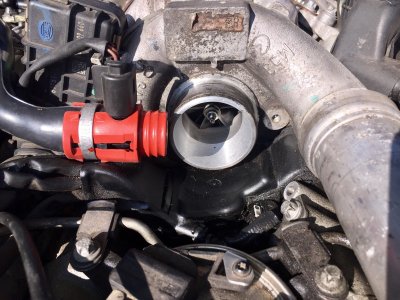

- #Om642 diesel problems install oil catch can skin#
- #Om642 diesel problems install oil catch can free#
For example, a 3.2-litre Ford Ranger could use a ProVent 150 as the engine develops 147kW, but a ProVent 200 would be better suited if the Ranger engine had been tuned for higher output. Some filters are a one-size-fits-all solution, while others come in a variety of sizes, with sizing aligned to engine power. The most critical task when choosing a catch can of any type is making sure the inlet and outlet hoses are the same or larger diameter than the factory crank case vent hose it is interrupting. Finding an appropriate catch can to match the engine size is important These are usually referred to as catch filters. These more advanced designs feature a venturi, replaceable coalescing filter and baffles to extract as much oil from the air as possible. The feed-down effect for 4X4ers is a high-quality product that’s well researched and designed to perform, albeit with little concern for looking pretty in the engine bay. The most advanced designs usually come from heavier industries, such as trucking and earthmoving. The next variety includes baffles to extend the distance the oil-laden air travels, or a filter media such as stainless steel wool or mesh to catch the oil mist. The simplest, known as settling chambers, are a shiny metal tin with one hose in, one hose out and a way of draining the oil from the tin if it gets full. So there are different types of catch cans.
#Om642 diesel problems install oil catch can skin#
Filter media L-R ProVent 100, Flashlube Catch Can Pro, eBay fibrous filter, eBay metal gauze filterĪs with anything, there is more than one way to skin a cat. If the MAF sensor is completely out of its expected range, the ECU will implement limp-home mode and you’ll probably be on the phone to a tow truck. A coating of dirty old oil doesn’t allow the MAF sensor to read the airflow accurately, leading to under-fuelling and a reduction in power. Another problem that will occur is with the Mass Air Flow (MAF) sensor, which through the ECU regulates the fuel injection. It doesn’t take long for a heavy breathing diesel engine to partially block the intercooler and inlet manifold enough to cause a loss in performance. The intercooler is trying to take the heat out of the intake air, and as temperature drops, the oil mist forms droplets and sticks to the intercooler’s internal surfaces. The turbo won’t be much phased by a tiny amount of extra oil the temperature a turbo runs at will keep the oil vaporised. This feeds through the turbo and intercooler via a couple of pipes, before reaching the engine. Now most engines vent the crank case pressure into the air intake, just after the air filter. Modern turbo-diesel engines are highly-strung beasts with a lot of sensors, valves, filters and pipes required to keep them running healthily and efficiently. Your EGR valve without a catch can will eventually look like that on the left Instead, in theory a catch can will reduce maintenance costs and prevent a lot of potential issues. They are a passive device which won’t change the fuel economy or performance of your engine directly, and isn’t an illegal modification for a change. This air is heavily laden with oil mist, exactly the sort of thing that we don’t want floating in the air we breathe, nor in the air our engines want to breathe.Ī catch can’s only job is to separate the oil from the air so the oil can be recovered and either disposed of appropriately, or fed back into the sump where it can continue to lubricate your engine. Crank case ventilation prevents this pressure from building up, by releasing it on older vehicles straight into the atmosphere, while on newer vehicles into the air intake to be burned in the cylinders. On modern 4X4s, especially turbo-diesels, small amounts of gas from the combustion process in the engine seeps past the piston rings and into the sump.
#Om642 diesel problems install oil catch can free#
CLICK HERE TO READ THIS ARTICLE IN OUR FREE DIGITAL MAGAZINE

Clean fuel is obvious, but why the catch can? Read on. There are two upgrades that are almost mandatory for reliability with modern turbo-diesel engines: extra fuel filtration and a good quality oil catch can. We compare 7 of the best oil catch cans to see which is best for your engine Words by Mark Kendrick and Sam Purcell, Images by Mark Kendrick, Evan Spence and Ben Mullins


 0 kommentar(er)
0 kommentar(er)
